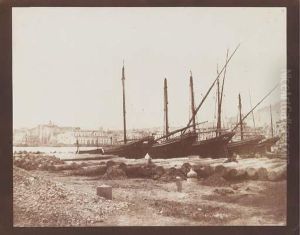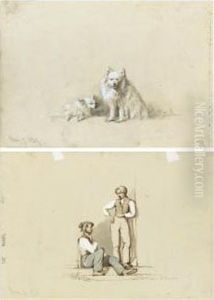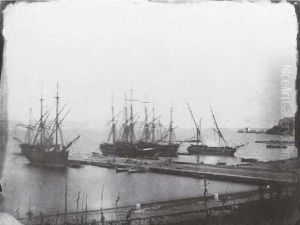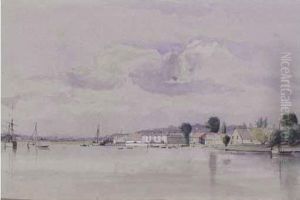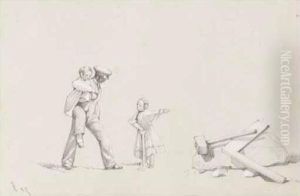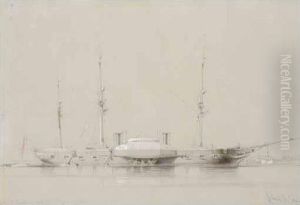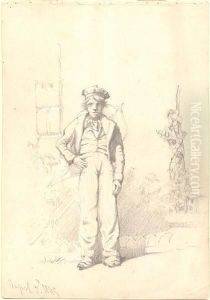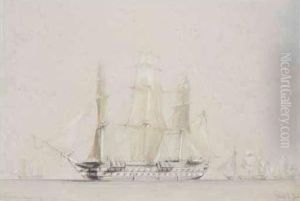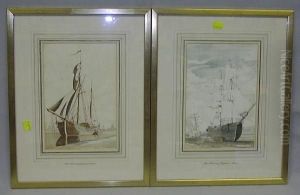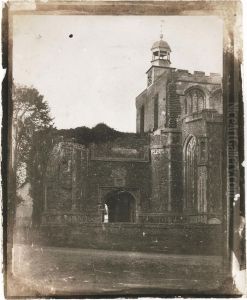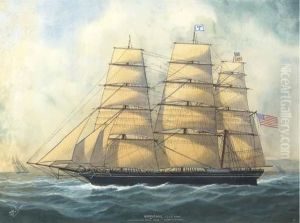Calvert Richard Jones Paintings
Calvert Richard Jones was a Welsh painter and one of the early photographers who contributed to the development of photography in the 19th century. Born in Swansea, Wales, on December 4, 1802, he was raised in a wealthy family. Jones was educated at Oxford University, where he studied mathematics but also developed a keen interest in art. He became a skilled painter and initially gained recognition for his work in watercolors.
Jones's interest in art led to a fascination with the emerging field of photography. He was a friend of William Henry Fox Talbot, a pioneering photographer and inventor of the calotype process, a precursor to photographic processes that followed. Under Talbot's influence, Jones became an enthusiastic practitioner of the calotype, experimenting with and refining the process. He is particularly noted for his travel photography, including images of architectural and archaeological sites, landscapes, and portraits.
In 1845, Jones, along with Rev. Francis Kilvert, embarked on a photographic expedition to the Mediterranean. They visited various locations, including Malta, Italy, and Greece, where Jones captured a series of compelling images that are now considered significant contributions to early travel and architectural photography. His work during this trip resulted in some of the earliest photographic records of these regions.
Jones was not just an artist but also an innovator. He worked on improving the calotype process, focusing on the technical aspects of photography, such as reducing exposure times and enhancing image clarity. Despite his contributions, he remained relatively unrecognized compared to his contemporaries in the field of photography.
Calvert Richard Jones continued to photograph until the 1850s, but as the calotype process became overshadowed by newer techniques, his photographic work waned. However, he continued to paint and be involved in the cultural life of Swansea until his death on June 7, 1877. In the years following his death, Jones's photographs have been reassessed, and he is now appreciated as an important figure in the history of photography, particularly for his role in the development of early photographic techniques and his eye for composition in travel photography.
